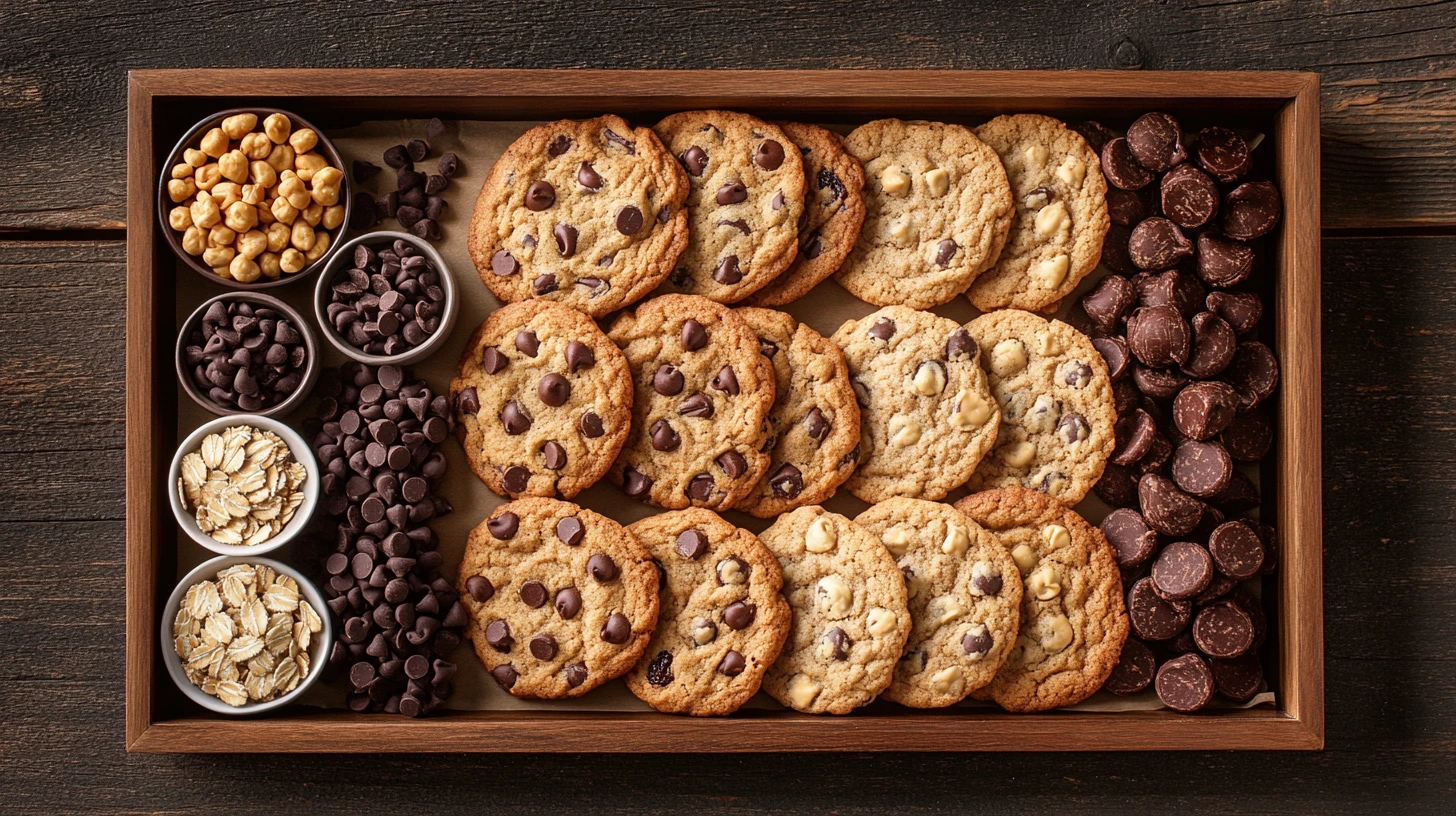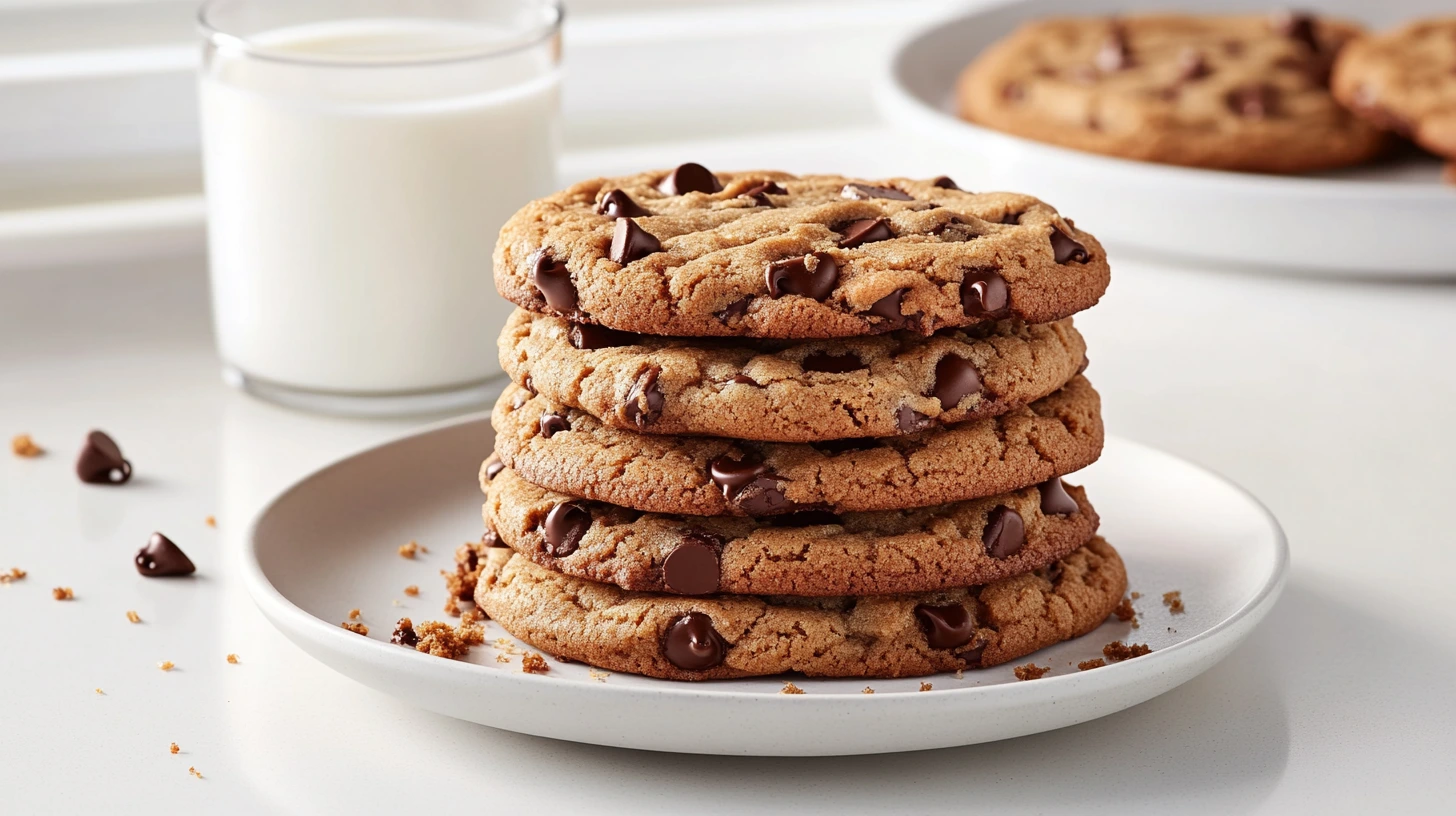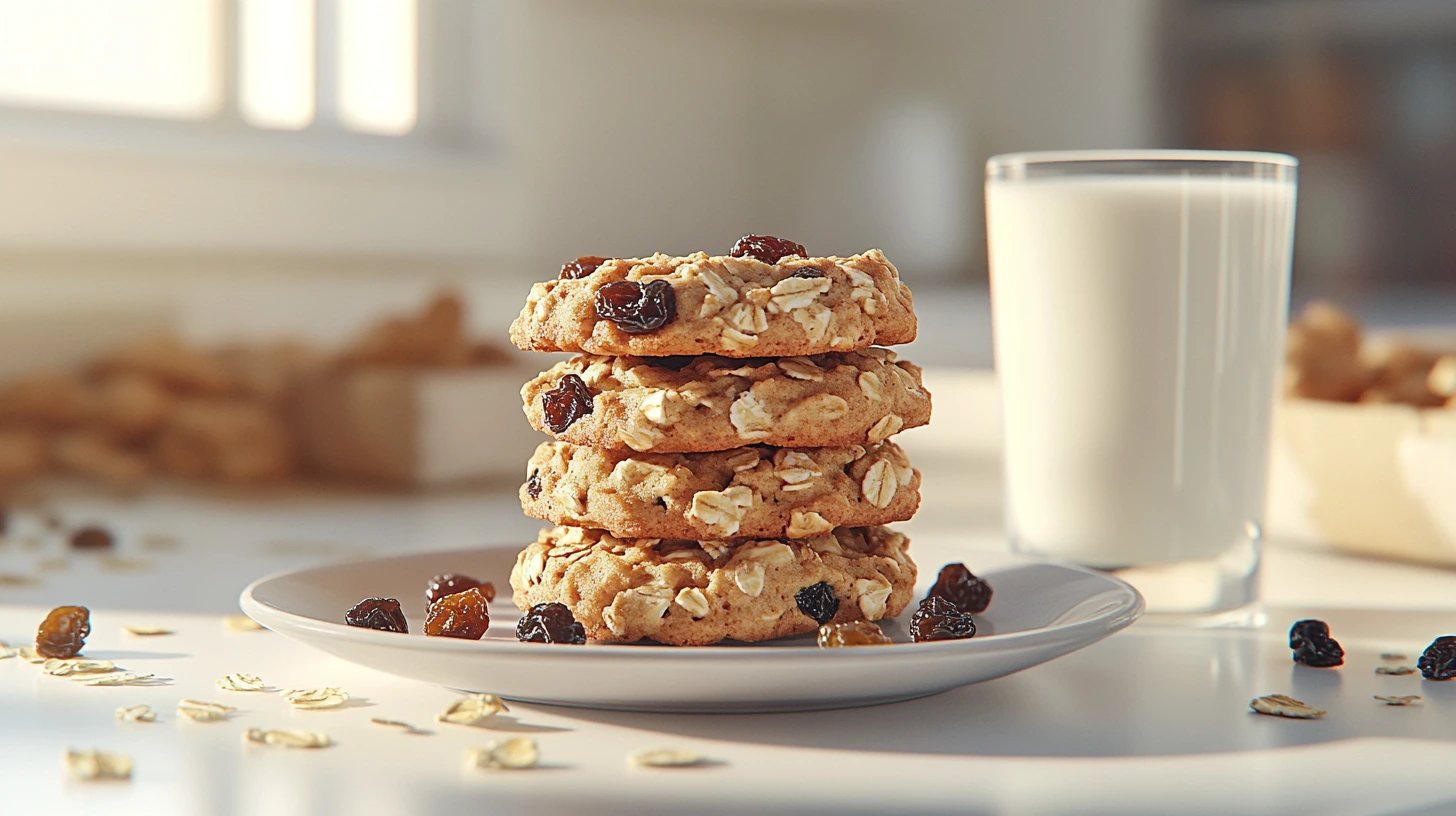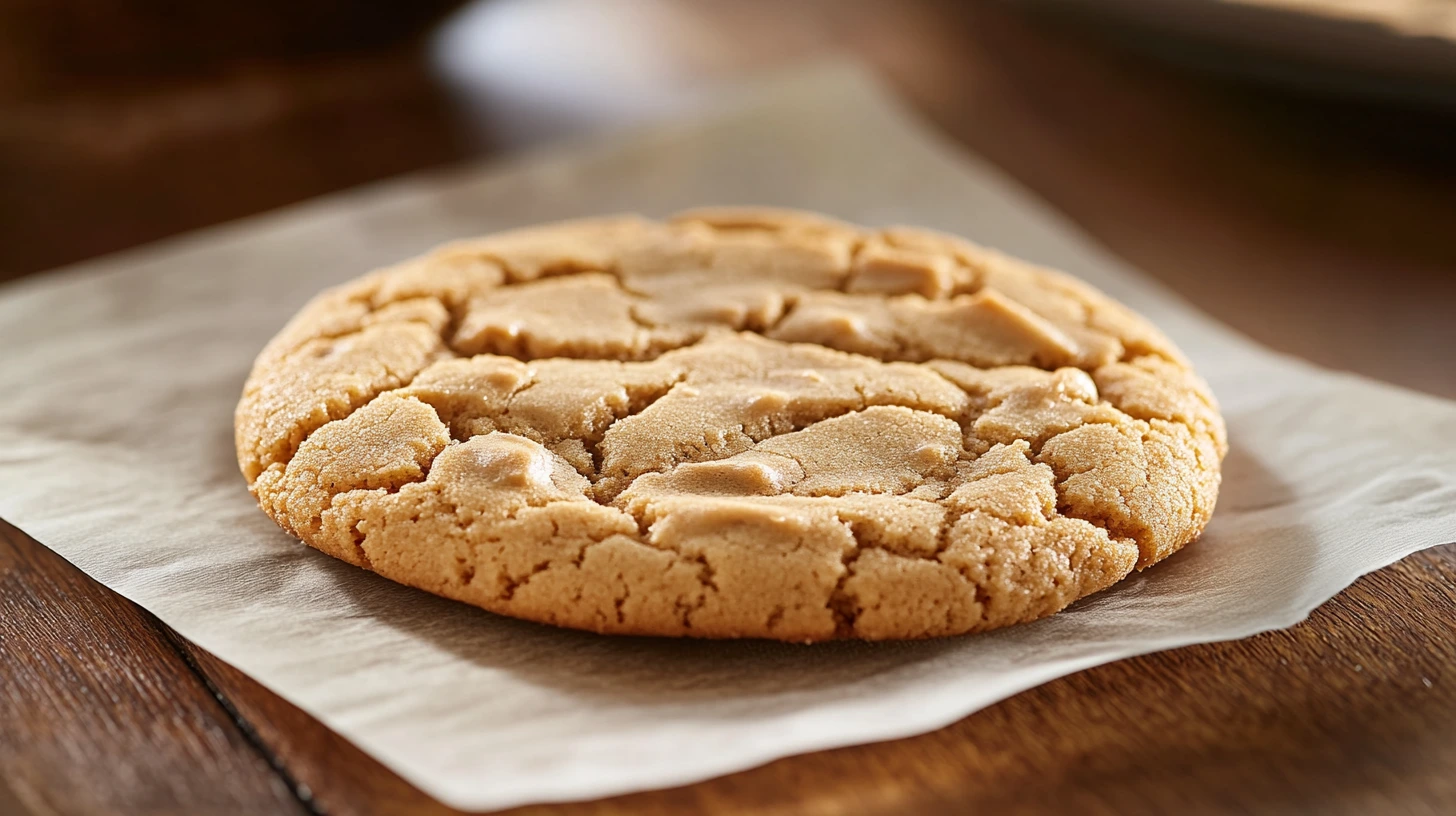What are the Top 3 Cookies?

Introduction to the Top 3 Cookies:
Top 3 Cookies have long been a favorite treat for people of all ages and cultures. These bite-sized desserts offer endless varieties of flavors, textures, and styles, making them a universal symbol of comfort and indulgence. Whether enjoyed with a glass of milk, coffee, or on their own, cookies are a sweet delight that never goes out of style.
The Universal Appeal of Cookies
Cookies hold a special place in the hearts of dessert lovers worldwide. Their appeal lies in their versatility and ability to cater to all tastes:
- Variety: From soft and chewy chocolate chip cookies to crisp buttery shortbread, there’s a cookie for everyone.
- Convenience: Cookies are easy to make, portable, and perfect for any occasion, from casual snacking to formal celebrations.
- Cultural Significance: Many cultures have signature cookies, such as Italian biscotti, French macarons, or Middle Eastern ma’amoul, showcasing the global love for this treat.
Different Categories of Cookies
Cookies come in a variety of forms, each with its unique preparation method and characteristics:
- Drop Cookies, such as classic chocolate chip cookies, are Made by dropping spoonfuls of dough onto a baking sheet.
- Rolled Cookies: Dough is rolled out and cut into shapes, perfect for sugar cookies or gingerbread.
- Bar Cookies: Baked in a pan and cut into squares, like brownies or blondies.
- Refrigerator (Icebox) Cookies: Dough is shaped into logs, chilled, and sliced before baking, such as pinwheel cookies.
- Sandwich Cookies: Two cookies joined with a filling, like Oreos or whoopie pies.
- No-Bake Cookies: Made without baking, often combining ingredients like oats, chocolate, and peanut butter.
Criteria for Selecting the Top 3 Cookies
Given the wide variety of options available, choosing the top 3 cookies is no easy task. Several key factors must be considered to narrow down the choices, ensuring the selections represent the best in taste, texture, and cultural importance.
Taste and Flavor Profiles
- Balance of Flavors: The top cookies should have a well-rounded flavor profile, balancing sweetness with other complementary notes such as chocolate, spices, or nuts.
- Universal Appeal: While taste is subjective, the selected cookies should be enjoyable to a broad audience, transcending personal preferences.
- Innovative or Classic Flavors: A great cookie can be a timeless classic or a creative twist that introduces new and exciting flavors.
Texture and Consistency
- Desired Texture: Whether soft and chewy, crisp and crunchy, or melt-in-your-mouth, the cookie’s texture should align with its type and preparation method.
- Consistency in Baking: A hallmark of a great cookie is its ability to deliver consistent results with each batch, ensuring the same delightful experience every time.
- Contrast of Elements: Many popular cookies, like chocolate chip or oatmeal raisin, excel because they combine contrasting textures, such as chewy centers with crisp edges.
Popularity and Historical Significance
- Cultural Impact: The cookie should be significant in culinary history, representing a tradition or a staple in global baking.
- Enduring Popularity: The best cookies have stood the test of time, remaining favorites across generations.
- Global Recognition: A cookie’s inclusion in the top list is reinforced if it is widely prevalent or has variations across different cultures.
The Classic Chocolate Chip Cookie: A Timeless Favorite

The chocolate chip cookie is a dessert that has stood the test of time, beloved for its simplicity and versatility. It’s a staple in bakeries and home kitchens, offering a comforting and nostalgic treat for generations.
History and Origins of the Chocolate Chip Cookie
The chocolate chip cookie was invented in the 1930s by Ruth Wakefield, the owner of the Toll House Inn in Massachusetts. She added chopped pieces of Nestlé semi-sweet chocolate to her cookie dough, expecting them to melt and blend into the batter. Instead, the chocolate retained its shape, creating the iconic chocolate chip cookie.
How the Chocolate Chip Cookie Became Iconic
- Nestlé Partnership: The recipe became so popular that Nestlé partnered with Wakefield and printed her recipe on their chocolate chip packaging.
- Global Appeal: The chocolate chip cookie gained international recognition over time, symbolizing American baking.
- Cultural Staple: Its simplicity and adaptability made it a household favorite and countless variations and innovations have emerged over the years.
Key Ingredients of Chocolate Chip Cookies
The magic of chocolate chip cookies lies in the balance of their core ingredients:
- Flour: Provides structure and determines the texture (chewy or crisp).
- Butter: Adds richness and flavor; melted butter often leads to a chewier texture.
- Sugar: A mix of brown sugar and granulated sugar creates depth in flavor and influences texture.
- Eggs: Bind the ingredients and contribute to the soft, chewy interior.
- Chocolate Chips: The star ingredient, providing melty, rich chocolate pockets.
The Perfect Texture: Chewy vs. Crispy
- Chewy Cookies: Use more brown sugar and melted butter, and bake at a slightly lower temperature.
- Crispy Cookies: Increase granulated sugar, reduce moisture, and bake longer for golden edges.
Variations of the Chocolate Chip Cookie
The classic recipe serves as a base for endless creativity.
Popular Add-ins and Modifications
- Nuts: Walnuts, pecans, or almonds add crunch and complement the chocolate.
- Alternative Flavors: Incorporate white chocolate, dark chocolate, or peanut butter chips for variety.
- Unique Ingredients: Add oatmeal, coconut flakes, or spices like cinnamon for unique twists.
- Dietary Variations: Gluten-free, vegan, or keto adaptations make the cookie accessible to different diets.
The All-Time Favorite Oatmeal Cookie

The oatmeal cookie is a classic dessert combining wholesome ingredients and comforting flavors. Loved for its versatility and heartiness, it has become an all-time favorite treat.
The Rich History of Oatmeal Cookies
Oatmeal cookies’ origins are traced back to Scottish oatcakes, which were savory and used as a portable source of energy. Over time, adding sugar and other sweet ingredients transformed oatcakes into the oatmeal cookies we know today.
- Popularity in the U.S.: Oatmeal cookies gained widespread recognition in the early 1900s when Quaker Oats began printing recipes on their packaging.
- Timeless Appeal: Their combination of nutritious oats and sweet flavors made them a staple in households, often enjoyed as a healthier cookie option.
Oats as a Staple Ingredient: Health Benefits and Taste
- Health Benefits: Oats are rich in fiber, vitamins, and minerals, making them a nutritious addition to the cookie.
- Taste and Texture: Oats add a hearty, chewy texture and a slightly nutty flavor, making oatmeal cookies distinct from other types.
Popular Oatmeal Cookie Variations
The oatmeal cookie’s flexibility makes it a favorite for incorporating different ingredients.
The Role of Raisins, Nuts, and Spices
- Raisins: The traditional add-in for oatmeal cookies, raisins provide a natural sweetness and chewy texture.
- Nuts: Walnuts, pecans, or almonds add a delightful crunch and complement the oats’ earthy flavor.
- Spices: Cinnamon, nutmeg, and cloves enhance the warmth and depth of the cookie’s flavor profile.
Other creative variations include dried cranberries, chocolate chips, or shredded coconut to cater to diverse tastes.
The Chewy vs. Crispy Debate in Oatmeal Cookies
The texture of oatmeal cookies is a defining characteristic, and preferences often vary:
- Chewy Oatmeal Cookies: Achieved by using more brown sugar, adding moisture with ingredients like applesauce, and baking for a shorter time.
- Crispy Oatmeal Cookies: To achieve a golden, crunchy finish, use more granulated sugar and less liquid, and bake longer at a slightly higher temperature.
The Irresistible Peanut Butter Cookie

Peanut butter cookies are a beloved treat known for their rich, nutty flavor and satisfying texture. These cookies are a timeless favorite, whether enjoyed in their classic form or with creative twists.
The Origins of Peanut Butter Cookies
The peanut butter cookie originated in the United States in the early 20th century.
- Early Recipes: In the early 1900s, George Washington Carver popularized the use of peanuts in various recipes, including cookies, to promote peanut farming.
- The Fork Mark Tradition: The signature crisscross pattern on peanut butter cookies became standard in the 1930s, recommended by Pillsbury as a way to flatten the dense dough for even baking.
Why Peanut Butter Is a Perfect Cookie Ingredient
- Rich Flavor: Peanut butter adds a distinctive, nutty flavor that pairs well with sweet and salty profiles.
- Moisture and Binding: Its creamy consistency helps create a moist and tender cookie while binding the ingredients together.
- Versatility: Peanut butter complements a wide range of add-ins, from chocolate chips to jam.
The Texture and Flavor Profile of Peanut Butter Cookies
Peanut butter cookies are loved for their unique combination of texture and taste.
- Texture: Depending on the recipe, they can range from soft and chewy to crisp and crumbly.
- Flavor: Peanut butter’s rich, nutty flavor is often enhanced with a hint of vanilla or a sprinkle of salt, creating a perfect balance of sweet and savory.
Unique Variations: From Classic to Innovative
- Classic Peanut Butter Cookie: A simple combination of peanut butter, sugar, and flour, often made with a crisscross fork pattern.
- Double Peanut Butter: Adding peanut butter chips to the dough for an extra burst of peanut flavor.
- Peanut Butter Blossoms: Topped with a Hershey’s Kiss, combining peanut butter and chocolate in a single bite.
- Innovative Twists: Incorporating flavors like honey, coconut, or spices or using almond butter for a variation.
Peanut Butter Cookie Pairings with Other Flavors
Peanut butter cookies pair beautifully with a variety of complementary flavors:
- Chocolate: Chocolate chips or drizzles provide a rich, sweet contrast to peanut butter’s saltiness.
- Jam or Jelly: A nod to the classic PB&J, adding a fruity layer enhances the cookie’s sweetness.
- Caramel or Toffee: Adds a chewy, buttery element that elevates the flavor.
- Nuts and Seeds: Chopped peanuts, almonds, or sunflower seeds add texture and enhance the nutty profile.
The Influence of Regional Variations on Top 3 Cookies Preferences
Cookies are a universally loved treat, but regional influences significantly shape the flavors, ingredients, and styles that define cookie preferences. From the differences within a single country to the diverse trends around the globe, cookies tell a story of local traditions and tastes.
Regional Cookie Preferences: North vs. South
In the United States, cookie preferences often reflect different regions’ cultural and culinary diversity.
- Northern Preferences:
- Classic and Comforting: Chocolate chip cookies reign supreme, often enjoyed with a warm beverage in colder climates.
- Seasonal Specialties: Northern regions favor festive cookies like gingerbread and snickerdoodles during the holiday season.
- Crisp and Buttery: Shortbread cookies, influenced by European baking traditions, are a northern favorite.
- Southern Preferences:
- Rich and Decadent: Southern baking often emphasizes indulgence, with favorites like pecan and butter cookies.
- Traditional Ingredients: Cookies featuring molasses or sorghum reflect the region’s agricultural heritage.
- Chewy Textures: Soft, chewy cookies such as oatmeal raisins are often preferred, embodying a sense of warmth and comfort.
Global Cookie Trends: A Snapshot from Different Cultures
Cookies reflect the flavors and ingredients unique to each culture, showcasing how this humble dessert adapts to regional tastes.
- European Traditions:
- France: Delicate macarons with almond flour shells and flavored fillings.
- Italy: Biscotti, a twice-baked cookie, pairs beautifully with coffee or wine.
- United Kingdom: Digestive biscuits and shortbread, often enjoyed with tea.
- Asian Favorites:
- Japan: Matcha cookies and light, crispy treats with a subtle sweetness.
- India: Nankhatai, a spiced shortbread cookie flavored with cardamom and ghee.
- China: Almond cookies and mooncakes enjoyed during festivals and celebrations.
- Middle Eastern Delicacies:
- Ma’amoul: Rich cookies filled with dates, nuts, or figs, often enjoyed during religious holidays.
- Sesame or tahini cookies offer a nutty flavor profile.
- American Influences Abroad:
- Chocolate chip cookies, brownies, and peanut butter cookies are now popular in many countries, reflecting the global reach of American cookie culture.
Baking Tips for Perfecting Your Favorite Top 3 Cookies Recipes
Mastering the art of baking cookies requires not only the right ingredients but also the proper tools and techniques. By focusing on key details, you can consistently achieve cookies with the perfect texture and flavor.
Essential Tools and Techniques for Baking Cookies
The right tools and techniques are essential for professional-quality cookies at home.
- Baking Tools:
- Mixing Bowls: Use sturdy, medium-to-large bowls for mixing dough.
- Measuring Tools: Invest in accurate measuring cups and spoons for consistency.
- Cookie Scoops: Ensure uniformity by using scoops to portion dough.
- Baking Sheets: Opt for rimless sheets or parchment-lined trays to prevent sticking and promote even baking.
- Cooling Racks: Allow cookies to cool evenly and avoid overbaking from residual heat.
- Techniques for Success:
- Chill the Dough: For cookies that hold their shape, refrigerate the dough for at least 30 minutes before baking. This prevents spreading and enhances flavor.
- Room-Temperature Ingredients: Use butter and eggs for better incorporation and smoother dough.
- Avoid Overmixing: Mix wet and dry ingredients until combined to avoid tough cookies.
Tips for Achieving the Perfect Texture and Flavor
Whether you prefer soft and chewy cookies or crisp and crunchy ones, these tips will help you customize your results.
- For Chewy Cookies:
- Use more brown sugar than white sugar, as brown sugar retains moisture.
- Incorporate melted butter for a softer texture.
- Bake at a slightly lower temperature for a few minutes less to maintain a chewy center.
- For Crisp Cookies:
- Use more granulated sugar, which promotes spreading and crisping.
- Bake at a slightly higher temperature to encourage browning.
- Roll the dough thinner for cookies with a crispy texture.
- Flavor Enhancement:
- Add a pinch of salt to balance the sweetness and enhance other flavors.
- Use high-quality extracts, such as pure vanilla or almond extract, for depth of flavor.
- Toast nuts or spices before adding them to the dough to release their natural oils and intensify their flavors.
FAQs
What makes the chocolate chip cookie so popular?
Chocolate chip cookies are universally loved for their perfect balance of flavors and textures. The combination of buttery dough, melty chocolate, and the contrast between chewy centers and crisp edges makes them irresistible. Their versatility, easy preparation, and nostalgic appeal contribute to their enduring popularity.
Can I make oatmeal cookies healthier?
Yes! To make oatmeal cookies healthier:
- Use Whole-Grain Oats: Stick to old-fashioned oats for more fiber.
- Reduce Sugar: Substitute part of the sugar with natural sweeteners like honey or mashed bananas.
- Add Nutrients: Add nuts, seeds, or dried fruits for health benefits.
- Swap Fats: Use applesauce or Greek yogurt instead of butter for a lower-fat option.
Are peanut butter cookies gluten-free?
Traditional peanut butter cookies often contain flour, which is not gluten-free. However, they can be made gluten-free using alternatives like almond flour, oat flour, or all-purpose flour. Some recipes skip flour altogether, relying on peanut butter, sugar, and eggs to create the dough.
How do I store the top 3 cookies to keep them fresh?
- Room Temperature: Store cookies in an airtight container for up to a week. Place a piece of bread inside the container to maintain softness.
- Refrigeration: Refrigerate cookies with perishable fillings in an airtight container and bring them to room temperature before serving.
- Freezing: Freeze cookies in a single layer, then transfer them to a freezer-safe bag or container. They can last up to 3 months in the freezer.
What are some unique variations of the top 3 cookies?
The some unique variations of the top 3 cookies:
- Chocolate Chip Cookies: For a gourmet twist, add sea salt, use browned butter, or mix in toffee bits.
- Oatmeal Cookies: Incorporate dried cranberries and white chocolate, or add spices like cardamom for a new flavor.
- Peanut Butter Cookies: Combine with chocolate chips, swirl in jam for a PB&J-inspired cookie, or use crunchy peanut butter for added texture.
Can I freeze cookie dough for later use?
Yes, freezing cookie dough is a great way to have fresh-baked cookies on demand:
- Drop Cookies: Scoop portions of dough onto a baking sheet, freeze until firm, then transfer to a freezer-safe bag. Bake directly from frozen, adding 1-2 minutes to the bake time.
- Rolled Dough: Shape dough into logs, wrap it in plastic, and freeze. Thaw slightly before slicing and baking.
- Cookie Cutouts: Freeze pre-cut shapes on a tray, then store them in layers separated by parchment paper.
Conclusion: Why These Cookies Remain the Top Three Favorites
The Enduring Popularity of the Top 3 Cookies
Chocolate chip cookies, oatmeal cookies, and peanut butter cookies have cemented as beloved favorites due to their universal appeal, versatility, and delicious flavors. Each cookie offers something unique:
- Chocolate Chip Cookies: A timeless classic with a perfect balance of sweetness and texture, loved by all ages.
- Oatmeal Cookies: Wholesome and hearty, combining healthful ingredients with comforting flavors.
- Peanut Butter Cookies: Rich and nutty, offering indulgence and nostalgia in every bite.
These cookies have not only stood the test of time but have also adapted to changing tastes and dietary needs, with countless variations that cater to everyone’s preferences.
How These Cookies Bring People Together
Cookies can create connections, whether baked at home with loved ones, shared at gatherings, or gifted to others.
- Family Traditions: Many families pass down cherished cookie recipes, making them integral to holidays and celebrations.
- Social Moments: Sharing a plate of cookies fosters warmth and joy, turning ordinary moments into cherished memories.
- Cultural Significance: These cookies transcend borders, adapting to different cultures and preferences while maintaining their core appeal.
